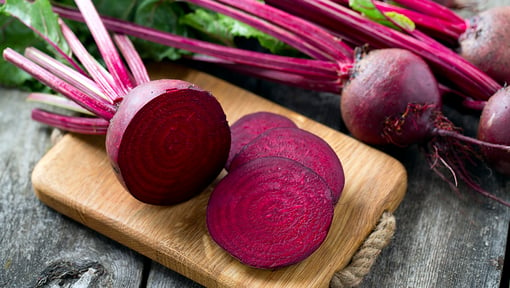Nitric oxide is an amazing little molecule that performs a wide range of vital functions in the body. It boosts blood flow to all your tissues and organs. It helps keep blood pressure and cholesterol at healthy levels. It stymies the formation of plaque, which in turn helps keep blood vessels flexible and healthy. Together, these benefits may help decrease your risk for heart disease, heart attack, and stroke.
But nitric oxide does even more. Let’s take a closer look at the host of other health perks it can bring. The many ways nitric oxide keeps your body healthy
The many ways nitric oxide keeps your body healthy
- Blood flow. Nitric oxide signals your blood vessels to relax and widen. This boosts the flow of oxygen- and nutrient-rich blood to all the tissues of your body. And it helps bring hormones to your cells that your cells need for their many jobs.
- Blood pressure. When blood vessels relax and widen, that helps keep blood pressure in healthy ranges. Healthy blood pressure, in turn, can help lower your risk for heart disease, heart attack, and stroke.
- Blood vessel health. More relaxed, flexible blood vessels are healthier blood vessels. Nitric oxide also helps keep cholesterol in healthy ranges and may help curb the formation of blood clots.
- Enhanced exercise performance. Better blood flow brings more oxygen to your muscles, helping to reduce fatigue and boost endurance. Other research suggests that nitric oxide may help strengthen muscle contractions during exercise, as well.
- Brain function. Nitric oxide helps support the connections between brain cells, helping them communicate better with each other.
- Bone health. Nitric oxide helps support healthy bones by balancing the signals to cells that build new bone with the signals to the cells that break bone down.
- Wound healing and immune response. Nitric oxide may play a role in signaling the immune system to fight infections and heal wounds.
As you age, your body tends to make less nitric oxide. And the nitric oxide you do have may not function as well as it did when you were younger. Chronic disease and inflammation, both more common in older age, may cause your body’s stores of nitric oxide to break down more quickly.
The good news is you can take steps to keep these levels up to par. To do so, it may help to understand the many different ways your body makes nitric oxide. Here are just a few of them, and some ways you can support their production process.

Exercise as an avenue for boosting nitric oxide
Exercise is also thought to increase your body’s production of nitric oxide. And higher levels are in turn thought to enhance exercise performance, especially muscle endurance. One way nitric oxide does this is by increasing the flow of oxygen-rich blood to your muscles. This helps keep your muscles from tiring as quickly during your workouts. Make sure to keep up with your cardio and strength training workouts to help boost your nitric oxide levels.
Get tips for boosting your exercise motivation, even when you’re feeling blue.
How food can help you boost your nitric oxide
Different foods play a role in helping to keep your nitric oxide levels up.
- Foods high in nitrates. One of the ways your body makes nitric oxide is from a compound found in certain foods—mainly vegetables—called nitrates. Nitrates from food are converted in your mouth into another compound, called nitrites, with the help of bacteria in your saliva. These nitrites are then converted into nitric oxide in the stomach and in the cells that line your blood vessels.
Some foods contain both nitrates and nitrites. But either compound, when ingested, can be converted into health-boosting nitric oxide.
Here are a few nitrate-rich veggies you may want to add to your plate to help boost your levels of nitric oxide:

- Red beets
- Dark leafy greens (arugula, spinach, lettuce, endive)
- Celery
- Kohlrabi (German turnips)
- Chinese cabbage
- Fennel
- Leeks
- Parsley
Many other veggies and fruits also contain nitrates, just in lower amounts. So, eating a diverse array of fresh produce may help keep nitric oxide at healthy levels. And a mix of different fresh produce can help give your body all the other nutrients it needs to stay healthy. Learn how to choose nutritious foods to help fuel your body.
- Foods rich in polyphenols. Dark-colored fruits such as berries, pomegranate seeds, and purple grapes are high in polyphenols. So are red wine and dark chocolate. (Just be careful not to overindulge in these.) But these foods are thought to support nitric oxide production. They may also help make nitric oxide more active so it’s better able to perform all its jobs. And polyphenols may help prevent it from breaking down as quickly in the body.
- Foods high in vitamin C. Foods high in vitamin C (like citrus fruits and berries) may help activate an enzyme that helps produce nitric oxide. And vitamin C may help your body better absorb nitric oxide, according to some research findings.
- Foods high in the amino acids L-arginine and L-citrulline. While more research is needed, early findings suggest that these 2 amino acids may also play a key role in nitric oxide production.
Arginine-rich foods include red meat, poultry, fish, whole grains, soy foods, beans, dairy, and garlic. Eating garlic also helps activate an enzyme that’s needed to convert L-arginine into nitric oxide.
Your body makes L-citrulline, and you also get it in certain foods. By far, the richest source is thought to be watermelon. Although chickpeas, pumpkin seeds, cucumber, nuts, and squash may also be good sources.
A word of caution regarding amino acid supplements. Talk with your doctor first before taking these. L-arginine and L-citrulline supplements are often touted as a way to boost exercise endurance by increasing nitric oxide levels. Some studies suggest they are safe. But these supplements are not FDA-approved and may have side effects, especially for those on prescriptions to treat high blood pressure, diabetes, or erectile dysfunction. The best bet is to check with your doctor.
Are meats and cheeses high in nitrates and nitrites harmful?
The nitrates and nitrites that occur naturally in fruits and vegetables are not thought to be harmful. But the sodium nitrates and nitrites added to smoked cheese and cured meats like hot dogs, deli meats, and smoked ham produce a different compound when cooked. They are converted into nitrosamines, some of which may increase your risk of cancer.
So, you may want to limit or avoid those foods. (Just remember not to confuse these harmful added sodium nitrates and nitrites with the naturally occurring ones found in fruits and vegetables.)
Learn about a plant-based diet that does not require you to eliminate meat.

Can mouthwash stop the production of nitric oxide?
Some findings suggest that using antibacterial mouthwashes can kill the friendly bacteria in your mouth needed to convert nitrates from food into nitrites, and later into nitric oxide. More research is needed to confirm this. But if you’re trying to boost these levels, you may want to avoid using a commercial mouthwash. Or, at least try not to use mouthwash for several hours before and after you eat nitrate-rich foods. Some experts suggest swishing with a mix of water and baking soda instead.
Can nitric oxide trigger migraine headaches?
You may have heard that some nitrate-rich foods can trigger migraine headaches in some people. These foods include red wine, dark chocolate, processed meats, and even certain vegetables.
Nitric oxide widens blood vessels and increases blood flow to all your tissues, including your brain. And excess blood flow to the brain is thought to be behind migraine headaches.
If you get migraines, pay close attention to whether any of these foods seems to be a trigger for you. If so, talk with your doctor. Research suggests that only some people are susceptible to migraines from nitrate-rich food.
Can your body make too much nitric oxide?
Some findings suggest nitric oxide can reach harmfully high levels due to certain health problems. These include acute inflammation from sepsis and narrowed blood vessels seen in heart disease.
Your diet isn’t likely to raise these levels too much. Still, it’s a good idea to limit processed meats and stick to a balanced food plan that includes many types of fruits, veggies, whole grains, non-saturated fats, and protein. That can limit the risk of toxic nitric oxide levels in the body. But talk with your doctor if you have concerns about your levels becoming too high.
Nitric oxide—not to be confused with nitrous oxide or nitrogen oxide
Nitric oxide and nitrous oxide may sound the same, but the similarities stop there. Nitrous oxide, also known as “laughing gas,” is a gas used mostly in dental procedures to dull pain.
Nitric oxide is also entirely different from nitrogen oxide, an air pollutant mainly produced from burning fossil fuels in cars and power plants.

Boosting nitric oxide one step at a time
With the many ways nitric oxide protects your health and keeps your body and brain running like well-oiled machines, think about taking some of these steps to keep your levels in healthy ranges. You don’t have to take all of these steps at once. Taking one at a time may really help. Think about adding more beets and dark greens to your plate. Keep up with your workout routine. And talk with your doctor if you have any questions or concerns about boosting nitric oxide.
Not a Silver&Fit® member? Learn more about everything the program has to offer, including more helpful healthy living tips like this, here on our website.
This information is not intended to take the place of regular medical care or advice. Please check with your doctor before using this information or beginning any self-care program. Images used for this article do not depict any members of the Silver&Fit Program.
References
Bahadoran, Z., Mirmiran, P., Kabir, A., Azizi, F., & Ghasemi, A. (2017, November). The nitrate-independent blood pressure-lowering effect of beetroot juice: A systematic review and meta-analysis. Advances in Nutrition, 8(6), 830-838. https://doi.org/10.3945/an.117.016717
Bailey, S. J., Blackwell, J. R., Williams, E., Vanhatalo, A., Wylie, L. J., Winyard, P. G., & Jones, A. M. (2016, September 30). Two weeks of watermelon juice supplementation improves nitric oxide bioavailability but not endurance exercise performance in humans. Nitric Oxide, 59, 10-20. https://doi.org/10.1016/j.niox.2016.06.008
Brkic, D., Bosnir, J., Bevardi, M., Boskovic, A. G., Milos, S., Lasic, D., Krivohlavek, A., Racz, A., Cuic, A. M., & Trstenjak, N. U. (2017). Nitrate in leafy green vegetables and estimated intake. African Journal of Traditional, Complementary and Alternative Medicines, 14(3), 31-41. https://doi.org/10.21010/ajtcam.v14i3.4
Centers for Disease Control and Prevention. (2024, May 23). About Get Ahead of Sepsis. Sepsis. https://www.cdc.gov/sepsis/get-ahead-of-sepsis/index.html
Chachlaki, K., & Prevot, V. (2020, December). Nitric oxide signalling in the brain and its control of bodily functions. British Journal of Pharmacology, 177(24), 5437-5458. https://doi.org/10.1111/bph.14800
Chandel, S., Ali Khan, M., Singh, N., Agrawal, A., & Khare, V. (2017). The effect of sodium bicarbonate oral rinse on salivary pH and oral microflora: A prospective cohort study. National Journal of Maxillofacial Surgery, 8(2), 106–109 https://www.ncbi.nlm.nih.gov/pmc/articles/PMC5773983/
Cleveland Clinic. (2024, September 24). Circulatory system. https://my.clevelandclinic.org/health/body/21775-circulatory-system
Das, I., Khan, N. S., & Sooranna, S. R. (1995). Potent activation of nitric oxide synthase by garlic: A basis for its therapeutic applications. Current Medical Research and Opinion, 13(5), 257-263. https://doi.org/10.1185/03007999509111550
Dominguez, R., Mate-Munoz, J. L., Cuenca, E., Garcia-Fernandez, P., Mata-Ordonez, F., Lozano-Estevan, M. C., Veiga-Herreros, P., da Silva, S. F., & Garnacho-Castano, M. V. (2018). Effects of beetroot juice supplementation on intermittent high-intensity exercise efforts. Journal of the International Society of Sports Nutrition, 15, 2. https://doi.org/10.1186/s12970-017-0204-9
d'Unienville, N. M. A., Blake, H. T., Coates, A. M., Hill, A. M., Nelson, M. J., & Buckley, J. D. (2021, December 29). Effect of food sources of nitrate, polyphenols, L-arginine and L-citrulline on endurance exercise performance: A systematic review and meta-analysis of randomised controlled trials. Journal of the International Society of Sports Nutrition, 18(1), 76. https://doi.org/10.1186/s12970-021-00472-y
Gonzalez, A., Hyde, E., Sangwan, N., Gilbert, J. A., Viirre, E., & Knight, R. (2016, October). Migraines are correlated with higher levels of nitrate-, nitrite-, and nitric oxide-reducing oral microbes in the American Gut Project Cohort. mSystems, 1(5). https://doi.org/10.1128/mSystems.00105-16
Govoni, M., Jansson, E. A., Weitzberg, E., & Lundberg, J. O. (2008, December). The increase in plasma nitrite after a dietary nitrate load is markedly attenuated by an antibacterial mouthwash. Nitric Oxide, 19(4), 333-337. https://doi.org/10.1016/j.niox.2008.08.003
Honikel, K. O. (2008, January). The use and control of nitrate and nitrite for the processing of meat products. Meat Science, 78(1-2), 68-76. https://doi.org/10.1016/j.meatsci.2007.05.030
Hord, N. G., Tang, Y., & Bryan, N. S. (2009, July). Food sources of nitrates and nitrites: The physiologic context for potential health benefits. The American Journal of Clinical Nutrition, 90(1), 1-10. https://doi.org/10.3945/ajcn.2008.27131
Jonvik, K. L., Nyakayiru, J., Pinckaers, P. J., Senden, J. M., van Loon, L. J., & Verdijk, L. B. (2016, May). Nitrate-rich vegetables increase plasma nitrate and nitrite concentrations and lower blood pressure in healthy adults. The Journal of Nutrition, 146(5), 986-993. https://doi.org/10.3945/jn.116.229807
Khalaf, D., Kruger, M., Wehland, M., Infanger, M., & Grimm, D. (2019, July 22). The effects of oral L-arginine and L-citrulline supplementation on blood pressure. Nutrients, 11(7). https://doi.org/10.3390/nu11071679
Khatua, T. N., Adela, R., & Banerjee, S. K. (2013, Jun). Garlic and cardioprotection: Insights into the molecular mechanisms. Canadian Journal of Physiology and Pharmacology, 91(6), 448-458. https://doi.org/10.1139/cjpp-2012-0315
Klein-Nulend, J., van Oers, R. F., Bakker, A. D., & Bacabac, R. G. (2014, May). Nitric oxide signaling in mechanical adaptation of bone. Osteoporosis International, 25(5), 1427-1437. https://doi.org/10.1007/s00198-013-2590-4
Kobayashi, J., Ohtake, K., & Uchida, H. (2015, June 17). NO-rich diet for lifestyle-related diseases. Nutrients, 7(6), 4911-4937. https://doi.org/10.3390/nu7064911
Kroncke, K. D., Fehsel, K., & Kolb-Bachofen, V. (1997, April). Nitric oxide: Cytotoxicity versus cytoprotection—How, why, when, and where? Nitric Oxide, 1(2), 107-120. https://doi.org/10.1006/niox.1997.0118
Lundberg, J. O., Weitzberg, E., & Gladwin, M. T. (2008, February). The nitrate-nitrite-nitric oxide pathway in physiology and therapeutics. Nature Reviews Drug Discovery, 7(2), 156-167. https://doi.org/10.1038/nrd2466
Mayo Clinic. (2021, February 4). L-arginine. https://www.mayoclinic.org/drugs-supplements-l-arginine/art-20364681
Oral, O. (2021, September). Nitric oxide and its role in exercise physiology. The Journal of Sports Medicine and Physical Fitness, 61(9), 1208-1211. https://doi.org/10.23736/S0022-4707.21.11640-8
Shannon, O. M., Clifford, T., Seals, D. R., Craighead, D. H., & Rossman, M. J. (2022, August 1). Nitric oxide, aging and aerobic exercise: Sedentary individuals to Master's athletes. Nitric Oxide, 125-126, 31-39. https://doi.org/10.1016/j.niox.2022.06.002
Siervo, M., Lara, J., Ogbonmwan, I., & Mathers, J. C. (2013, June). Inorganic nitrate and beetroot juice supplementation reduces blood pressure in adults: A systematic review and meta-analysis. The Journal of Nutrition, 143(6), 818-826. https://doi.org/10.3945/jn.112.170233
Stanaway, L., Rutherfurd-Markwick, K., Page, R., Wong, M., Jirangrat, W., Teh, K. H., & Ali, A. (2019, July 22). Acute supplementation with nitrate-rich beetroot juice causes a greater increase in plasma nitrite and reduction in blood pressure of older compared to younger adults. Nutrients, 11(7). https://doi.org/10.3390/nu11071683
Sudarma, V., Sukmaniah, S., & Siregar, P. (2011, October). Effect of dark chocolate on nitric oxide serum levels and blood pressure in prehypertension subjects. Acta Medica Indonesia, 43(4), 224-228. https://www.ncbi.nlm.nih.gov/pubmed/22156352
Sverdlov, A. L., Ngo, D. T., Chan, W. P., Chirkov, Y. Y., & Horowitz, J. D. (2014, August 18). Aging of the nitric oxide system: Are we as old as our NO? Journal of the American Heart Association, 3(4). https://doi.org/10.1161/JAHA.114.000973
Torregrossa, A. C., Aranke, M., & Bryan, N. S. (2011, December). Nitric oxide and geriatrics: Implications in diagnostics and treatment of the elderly. Journal of Geriatric Cardiology, 8(4), 230-242. https://doi.org/10.3724/SP.J.1263.2011.00230
Webb, A. J., Patel, N., Loukogeorgakis, S., Okorie, M., Aboud, Z., Misra, S., Rashid, R., Miall, P., Deanfield, J., Benjamin, N., MacAllister, R., Hobbs, A. J., & Ahluwalia, A. (2008, March). Acute blood pressure lowering, vasoprotective, and antiplatelet properties of dietary nitrate via bioconversion to nitrite. Hypertension, 51(3), 784-790. https://doi.org/10.1161/HYPERTENSIONAHA.107.103523
Wink, D. A., Hines, H. B., Cheng, R. Y., Switzer, C. H., Flores-Santana, W., Vitek, M. P., Ridnour, L. A., & Colton, C. A. (2011, June). Nitric oxide and redox mechanisms in the immune response. Journal of Leukocyte Biology, 89(6), 873-891. https://doi.org/10.1189/jlb.1010550
Woessner, M., Smoliga, J. M., Tarzia, B., Stabler, T., Van Bruggen, M., & Allen, J. D. (2016, April 1). A stepwise reduction in plasma and salivary nitrite with increasing strengths of mouthwash following a dietary nitrate load. Nitric Oxide, 54, 1-7. https://doi.org/10.1016/j.niox.2016.01.002
This article was written by Gail Olson, edited by Jason Nielsen, and clinically reviewed by Elizabeth Thompson, MPH, RDN, on July 11, 2025.





